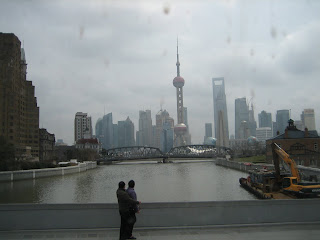





Like Paris, Beijing has been the sprawling cultural and political center of China for centuries. As the West’s successive and ultimately successful waves of reform and advancement accelerated, Chinese leadership and its civilization deteriorated. Confronted by the West’s superior technological and legal systems, the Chinese response was to ignore or arrogantly pretend it didn‘t matter. The Great Wall afforded no protection from good ideas! (The Japanese, on the other hand, got busy, launched their industrial revolution and were able to catch up in several generations.) The first 50 years of the Twentieth Century was consumed by war against itself and Japanese incursion. Under Mao, the country was united by force. But Mao was imprisoned by his silly and completely fruitless ideology, and China went backwards both in absolute and relative terms, compared to the West and Japan. A big, crude man, Mao could organize an army but had no clue how people and nations create wealth. Despite his complete failure to find a way forward for his nation, the Chinese leadership honored him with a large mausoleum at the edge of Tienamen Square. The leadership that followed in his has been much more successful. Like its economic fortunes, the skyline of Beijing has changed markedly over the past 30 years. Up and up! Huge, new towers of steel and glass have been and are being constructed, but the spiritual center still remains the Forbidden City, the palace completed in the early 15th century and the golden globe-topped Temple of Heaven. Can the leadership keep this guided missile on track? Time will tell.





















